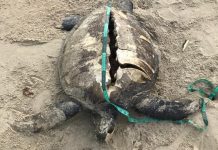context, and what we should all do in our respective small ways to fight it. Well, a natural event, EBOLA VIRUS INFECTION, has shifted my thinking a bit. However, I will get back to the causes of climate change two weeks from today. Why do you have to know about the impacts of Ebola virus infection on agriculture production, especially in The Gambia? You have to know because the virus could kill any person engaged in the agriculture industry. There is no statistical data from The Gambia that I know of that reports the number of people infected and or killed by the infection. By looking at information from Guinea Conakry, Sierra Leone, and Liberia (that are located in the same West Africa region as The Gambia), we can make reference to a similar situation in The Gambia if we (in The Gambia) happen to report an infection. How did the Ebola infection start? In May, according to VICE News, a woman in Kailahun, Sierra Leone, prepared some wild game her husband had hunted. The animal carried the Ebola virus, which infected the woman and then spread to her husband, eventually killing them both. They left behind two sons, ages five and ten, and another country on the cusp of disaster. Wild game hunting is a common practice in The Gambia as well. Mainly our Gambian farmers would hunt for wild games to substitute their diets and/or sell the meat to the general public as a source of income to buy food in a changing climate. Around the first week of September, 2014 while I was driving to Basse, URR, I met a police officer at a police check point in URR with a squirrel in his hand. I stopped and told the officer about the danger of consuming wild game in the face of Ebola virus infection. The officer went away with the game anyway. This is one typical example that could start the infection in The Gambia. I hope not, though. Patricia French, the national coordinator for Young Green Women Sierra Leone, an advocacy group for women and climate issues who has helped support the young boys whose mother passed away, believes that woman to be the first case of Ebola in Sierra Leone. Others have linked the spread to another woman, a traditional healer who worked across the border in Guinea with other Ebola victims. Traditional healers and their practice are very common in The Gambia. Word of caution to them!! Ebola is deadly and there is no way that they can cure an infected patient with their concoctions. If they happen to entice sick patients (as is a common practice on our radio station advertisements) that they can cure Ebola infection, they (the traditional healers) will be brewing a catastrophic outbreak. I know in some cases that The Gambia farming population depends on them (the traditional healers) for curing their ailments BUT EBOLA INFECTION is an exception. If we, as a nation, want to be self-sufficient in food by 2016, we have to be responsible in the way we protect ourselves and our vulnerable groups from Ebola infection. It is reported by many international agencies that over 2,800 people have now died from Ebola in West Africa. While the official line of Sierra Leone’s government stresses that the virus is spreading primarily from human to human, the initial Ebola outbreak in Guinea is thought to be traced back to possible contact with bats — which along with primates are often hunted for food commonly referred to as “bush meat.” But women’s traditional responsibilities for handling food in the region, and the effect of climate change on typical food supplies — that some say forces reliance on potentially infected bush meat — highlights how women are on the frontlines of the dual crises of Ebola and climate change. “The impact of climate change is already being felt in the country (Sierra Leone), like seasonal drought, strong winds, stronger storms, landslides, and affecting agricultural production for poor families as well as the export of agricultural goods,” Patricia French told VICE News. She added that these patterns push “most of the families to look for alternative foods,” such as wild animals. In another development, reports in recent years have pointed to Malaysia and Bangladesh as examples of countries where unusual weather patterns (seasonal floods, hurricanes, etc) and land use changes (slash and burn agriculture practices, shifting cultivation, etc) have triggered disease outbreaks as humans and agriculture crept in on bat habitats. A Harvard University instructor, Aaron Bernstein, said, “There is evidence that Ebola outbreaks tend to occur after droughts and heavy rains, but that doesn’t mean that’s climate change.” He added, however: “If western equatorial Africa is like everywhere else, the water cycle is being intensified by climate change.” Reports up until now have claimed that 55 to 60 percent of those who have died from Ebola in Guinea, Liberia, and Sierra Leone are women, with Liberia reporting 75 percent. The Liberian Health Ministry said the larger toll on women, though, was likely because of their roles as caregivers, which brings them in close contact with the disease. But a new report by the WHO and Imperial College London determined “no significant difference among the different countries in the total numbers of male and female case patients.” The fatality rate itself, the paper acknowledges, is complicated to calculate, but is estimated at around 71 percent. A press release for the study notes that men might be more likely to bury the “highly-infectious” dead bodies. Sidat Yaffa, Ph.D. Contact: [email protected]]]>
© 2019 Foroyaa Newspaper - Site by DigiTech Solutions




















